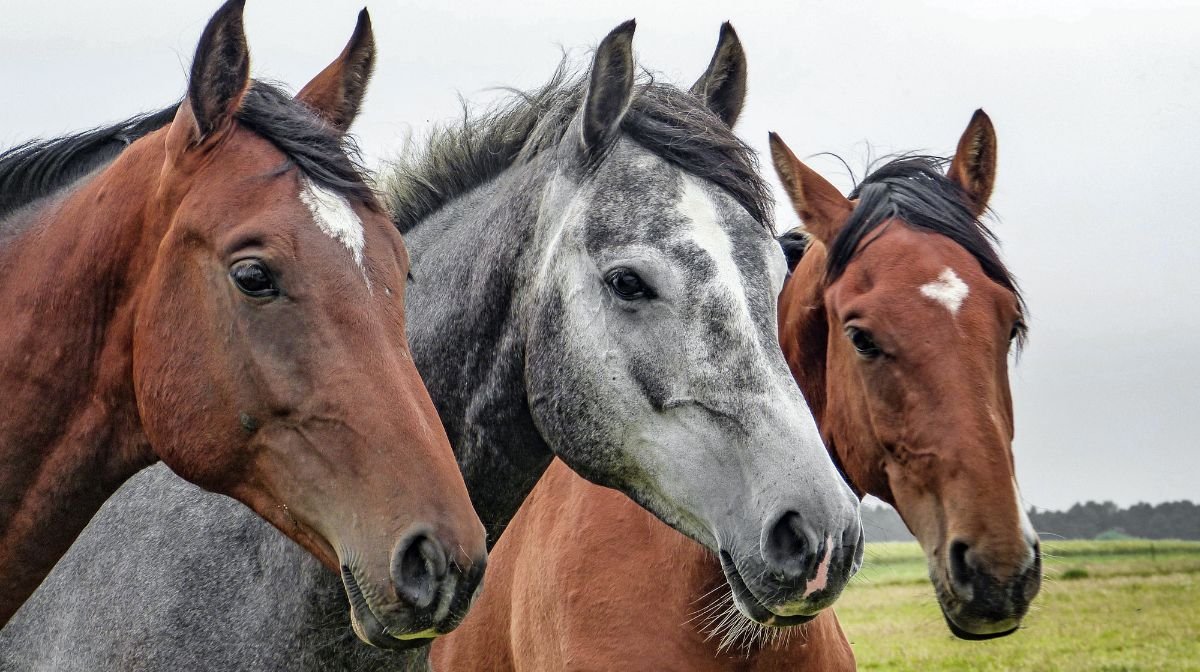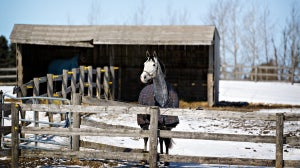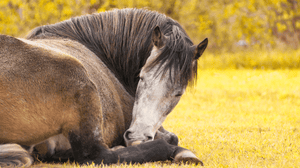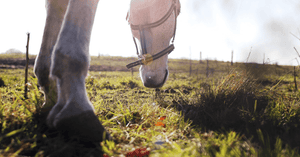
What is mud fever in horses?
Mud fever, also known as pastern dermatitis, is a common skin condition that affects horses, especially in wet and muddy conditions.
This helpful guide will provide an overview of what mud fever is, its signs, and the potential causes behind it. And, what you need to do if you think your equine friend has it.
Primarily impacting a horse's lower limbs, there are a whole range of symptoms for mud fever. Typically, it is characterised by inflammation, swelling, and skin changes.
While not life-threatening, mud fever can cause your horse health complications and pain further down the line. So, what are the signs to look out for?
Signs of mud fever:
Here are some of the signifiers that your horse or pony might have mud fever on the back of the pastern:
- Skin redness and swelling
The area becomes red, swollen, and warm to the touch.
- Crusty scabs and discharge
Mud fever often causes crusty scabs or sores on the skin's surface. These scabs can ooze pus or serum.
- Pain and inability to walk
Horses with mud fever might show signs of discomfort, and in some cases lameness.
- Matted hair and hair loss patches
Your horse may have matted patches with raw skin underneath or even patches of complete hair loss.
- Itching and irritation
In some cases, they may frequently stamp their legs or show signs of itching due to the discomfort (although this should not be confused with stamping due to feather mites).
- Other infections
In severe cases, mud fever can lead to more complex secondary bacterial infections.
Causes of mud fever:
There are several reasons why your horse may have developed mud fever.
- Prolonged exposure to wet and muddy conditions
As the name suggests, mud fever is commonly associated with horses that spend an extended period in muddy or wet paddocks, pastures, or riding areas. Moisture softens the skin and makes it more vulnerable to injury and infection.
- Bacterial infections
The skin's natural protective barrier can be compromised by moisture and mud, making it easier for nasty bacteria like Dermatophilus Congolensis to invade and infect the skin.
- Trauma and scratching
Horses that frequently scratch their legs or sustain minor injuries from environmental factors (e.g., thorns, debris) are more susceptible to mud fever.
- Poor grooming and hygiene
Inadequate grooming and cleaning of the lower limbs can allow dirt and mud to accumulate, further contributing to the development of mud fever.
- Genetics and individual susceptibility
Some horses may be genetically predisposed to developing mud fever.
Mud fever treatment (for now):
If your horse has been unfortunate enough to contract mud fever, the good news is it is treatable.
Through specialist advice, medication and other preventative measures you can alleviate the effects of scratches.
- Consult a vet
Contact a veterinarian for a proper diagnosis and treatment plan.
- Clean and dry wound
Keep the impacted area clean and dry, removing any loose scabs or crusts gently. Avoid causing further trauma to the skin.
- Medication
Your vet may prescribe topical creams or ointments to treat the infection and reduce inflammation. Always make sure legs are dry before applying any medication - they should be patted dry with a fresh clean towel, rather than be rubbed vigorously. Treatment may or may not involve antibiotics, depending on the case.
- Bandaging
In some instances, bandaging the area may be recommended (by a professional) to keep it clean and aid the healing process.
How to prevent mud fever (in future):
- Maintaining clean and dry stables
Ensure that your horse's living environment is clean and dry, especially during rainy seasons. Proper drainage and shelter can help reduce exposure to mud.
- Regular grooming
Practise good grooming habits, paying special attention to the lower limbs. Clean and dry your horse's pasterns and fetlocks daily, removing any mud or debris.
- Protective boots
Consider using waterproof or breathable boots designed to protect the lower limbs from moisture and mud. These can be especially useful in wet conditions.
- Avoid overexposure
Limit your horse's time in wet and muddy areas (e.g. standing by the gateway in turnout fields), and let your horse spend time in drier conditions.
Hopefully, your horse won’t ever have to deal with the troubles that accompany mud fever. If for whatever reason they do, you now know what to do about it.
Visit Equine Premium for any products and advice you need around your beloved horse’s gut health.









